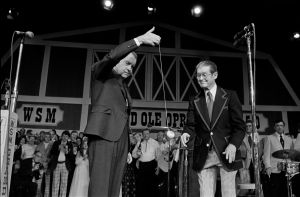
Source: Photo by David Hume Kennerly/Getty Images / Getty
March 16th, 1974 marked a significant moment in the history of country music with the relocation of the Grand Ole Opry from the Ryman Auditorium to the newly constructed Grand Ole Opry House. The Ryman Auditorium had been the home of the Grand Ole Opry for 41 years, and the move to the new facility was a much-needed upgrade for the popular show.
The Grand Ole Opry House was built as part of the Opryland complex, which was designed as a destination for country music fans from around the world. The new facility was larger and more modern than the Ryman, with a seating capacity of 4,400, state-of-the-art sound and lighting systems, and a spacious backstage area. The move to the new facility allowed the Grand Ole Opry to expand its programming and bring in more high-profile performers.
The final show at the Ryman Auditorium was attended by then-President Richard Nixon. The occasion was a bittersweet one for many, as the Ryman had been a beloved venue for country music performers and fans alike. However, the move to the Grand Ole Opry House marked a new chapter in the history of the Grand Ole Opry and cemented its position as the premier destination for country music in the world. While the move was not without its controversies, it ultimately allowed the Grand Ole Opry to expand and thrive, and it remains a vital part of the country music landscape to this day.

















